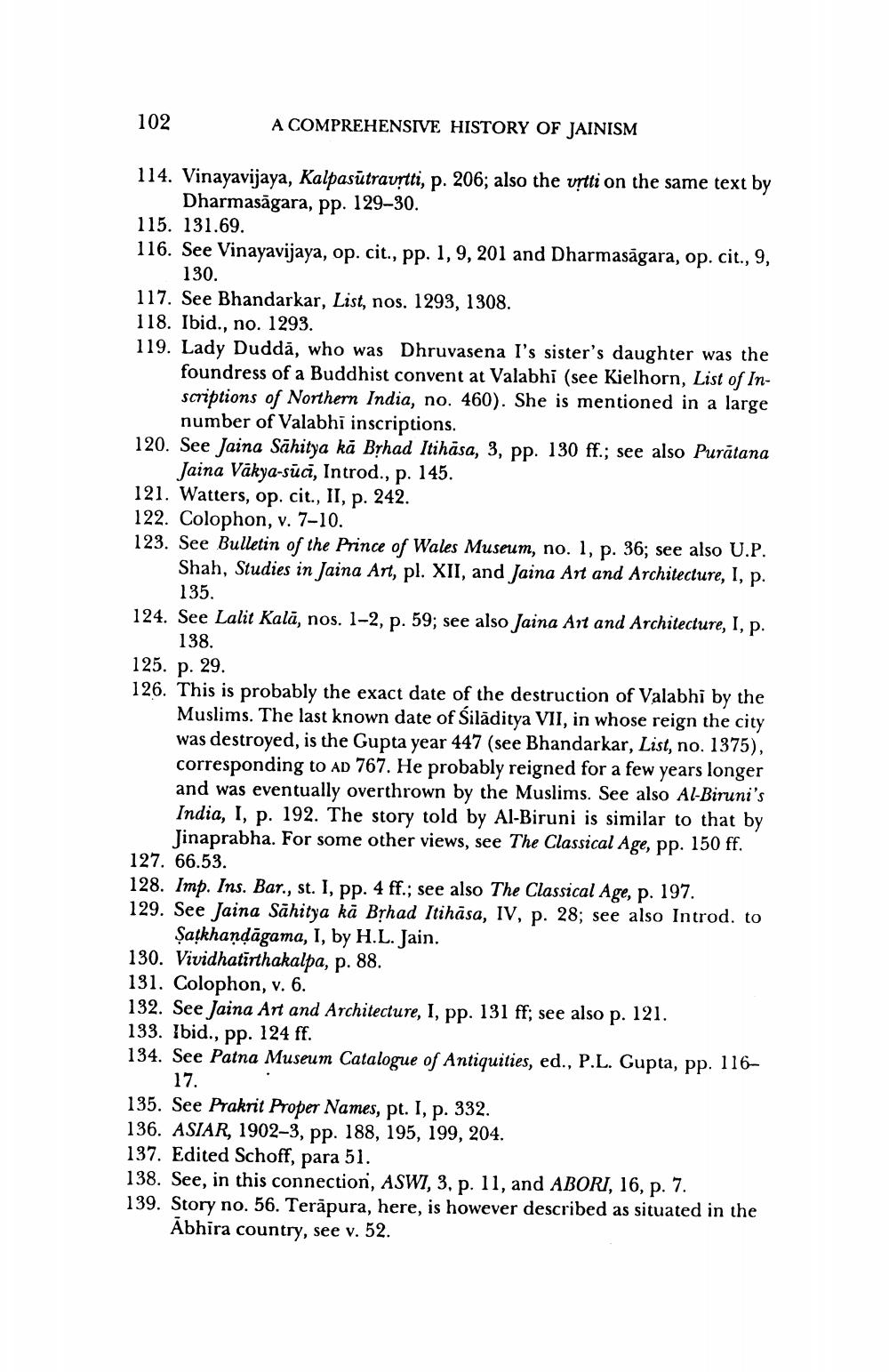________________
102
A COMPREHENSIVE HISTORY OF JAINISM
114. Vinayavijaya, Kalpasūtravịtti, p. 206; also the vștti on the same text by
Dharmasāgara, pp. 129–30. 115. 131.69. 116. See Vinayavijaya, op. cit., pp. 1,9, 201 and Dharmasāgara, op. cit., 9,
130. 117. See Bhandarkar, List, nos. 1293, 1308. 118. Ibid., no. 1293. 119. Lady Dudda, who was Dhruvasena I's sister's daughter was the
foundress of a Buddhist convent at Valabhi (see Kielhorn, List of Inscriptions of Northern India, no. 460). She is mentioned in a large
number of Valabhi inscriptions. 120. See Jaina Sāhitya kā Byhad Itihasa, 3, pp. 130 ff.; see also Purātana
Jaina Väkya-sūci, Introd., p. 145. 121. Watters, op. cit., II, p. 242. 122. Colophon, v. 7-10. 123. See Bulletin of the Prince of Wales Museum, no. 1, p. 36; see also U.P.
Shah, Studies in Jaina Art, pl. XII, and Jaina Art and Architecture, I, p.
135. 124. See Lalit Kalā, nos. 1-2, p. 59; see also Jaina Art and Architecture, I, p.
138. 125. p. 29. 126. This is probably the exact date of the destruction of Valabhi by the
Muslims. The last known date of Silāditya VII, in whose reign the city was destroyed, is the Gupta year 447 (see Bhandarkar, List, no. 1375), corresponding to AD 767. He probably reigned for a few years longer and was eventually overthrown by the Muslims. See also Al-Biruni's India, I, p. 192. The story told by Al-Biruni is similar to that by
Jinaprabha. For some other views, see The Classical Age, pp. 150 ff. 127. 66.53. 128. Imp. Ins. Bar., st. I, pp. 4 ff.; see also The Classical Age, p. 197. 129. See Jaina Sahitya kā Brhad Itihāsa, IV, p. 28; see also Introd. to
Şațkhandāgama, I, by H.L. Jain. 130. Vividhatirthakalpa, p. 88. 131. Colophon, v. 6. 132. See Jaina Art and Architecture, I, pp. 131 ff; see also p. 121. 133. Ibid., pp. 124 ff. 134. See Patna Museum Catalogue of Antiquities, ed., P.L. Gupta, pp. 116
17. 135. See Prakrit Proper Names, pt. I, p. 332. 136. ASIAR, 1902–3, pp. 188, 195, 199, 204. 137. Edited Schoff, para 51. 138. See, in this connection, ASWI, 3, p. 11, and ABORI, 16, p. 7. 139. Story no. 56. Teräpura, here, is however described as situated in the
Abhira country, see v. 52.




